by Farideh Farhi
The countrywide official results of the parliamentary and Assembly of Experts elections are not yet finalized, and in any case a detailed analysis of the numbers requires more time. The Guardian has a good round-up of approximate results that measures the extent of the blow received by hardliners, particularly in the city of Tehran. But the results released so far, as well as the way the election was conducted, is sufficient for me to call what happened one of the most significant (and interesting) elections in Iran’s post-revolution history.
Here are my initial takeaways.
Unlike what some headlines in the Western press have described, this election was not a “win” for the reformists since they did not contest the election as reformists per se. They entered the election in an alliance consisting of reformists, centrists (described as Rouhani government supporters), and even some conservatives. This alliance explicitly introduced itself to the Iranian public as “the second step,” following the “first step” taken toward “moderation” in the 2013 election of President Hassan Rouhani. It also explicitly asked the electorate to vote for the complete lists of “Reformist and Government Supporters” (RSG), alternatively called the Hope List, as a way to remove from elected offices those who had publicly opposed the direction Rouhani had taken the country since his election.
The voters responded, particularly in the capital city of Tehran (more on this later), which has the largest number of parliamentary seats (30). They voted out some of the loudest opponents of the nuclear agreement. This was possible since most, not all, of the loudest MPs against the agreement were from the city of Tehran. It was also made possible because Tehranis seem to have voted in larger numbers than in the past couple of elections. As such the election could be better described as a referendum on the direction of the country under President Rouhani and whether the part of the population that supports the new direction could register its weight in a meaningful way despite a highly engineered electoral process.
A Polarized Campaign
The other side also managed to create a candidate list for the whole country based on alliance of several different factions that call themselves “principlist.” This alliance included members of the Islamic Coalition Party as well as an array of other conservative groupings that range from right of center to extreme right such as the Steadfast Front. The criticism the organizers of the list faced was that the extreme right dominated their Tehran list and excluded some well-known conservative MPs who ended up producing their own competing list (which did not do well unless the names of the conservatives mentioned in their list also appeared on the RSG list). It also endangered some middle-of-the-road conservatives because of their association with the hardliners.
But the key point is that the principlists also worked predominantly through an alliance process. Their abysmal showing in Tehran should not deflect from the fact that their countrywide list has gained at least 25 percent of the seats in the parliament (even if within that list the extreme right did not do well). In fact, for those interested in Iranian politics, it is about time to talk less about Iranians moving in one direction or another sheep-like in droves and begin paying more attention to the political multiplicity embedded in the provincial politics of a socioeconomically and culturally diverse country. The RSG list did very well in Tehran and some provinces like Yazd and not well at all in some provinces such as South Khorasan. It has apparently done well in some big provincial cities such as Isfahan while not doing well in the rest of those provinces and vice versa. In Mashhad, the capital of Razavi Khorasan, members of the principlist list swept all five seats (with at least one hardline opponent of the nuclear deal returning). Heavy vetting of reformist candidates and the lack of alternatives for the voters cannot be constituted as the sole explanation for this variation in results. Better organization, provincial networks, different issues, and so on must also be taken into account.
Despite these mixed results, the polarization of the elections between the two major alliances clarified the stakes in the election in terms of the policy direction of the country. At the same time, the mixed results better reflect the diverse sentiments in Iran. And this is what makes this election significant and interesting. Despite heated rhetoric, one side accusing the other of being the tool of outside forces and the other accusing the other of being extremist, the over-the-top language functioned as an instrument of persuasion in the competition for votes and not an instrument of elimination of the opponent from the competition. Even unelected authorities that have the power to eliminate only warned about foreign infiltration and called on voters to not vote for those whose ranks were infiltrated by the enemy or were following its dictates. Some voters were persuaded; others weren’t.
All in all, this heated and polarized rhetoric occurred within a calm environment, in the process confirming the elections as an established means for coalitions and alliances to compete against each other. This is an important step particularly after the contested 2009 elections and the heavily stacked 2012 parliamentary elections had thrown into question the integrity of the electoral process in Iran. To be sure, the 2013 election was the first step in re-establishing the integrity of elections within the frame of the Islamic Republic. But it was important to establish a trend.
Linking of the Lists
More than anything else, the two recent elections suggested that the time is over when one side thought it could get rid of the other side for good or even temporarily through force or a highly manipulated electoral process. Not that some sort of force majeure was not tried. The Guardian Council, dominated by clerics who themselves were candidates, unabashedly disqualified most opponents who could have won through their name recognition.
But their opponents, instead of withdrawing or sulking, made the strategic decision to participate in an alliance that had proven successful in receiving 51 percent of the vote in the 2013 presidential election. And then they made the tactical decision to connect together, particularly in the city of Tehran, by repeatedly asking voters to support everyone on the so-called 30+16 lists (the first for the parliament and the second for the Assembly of Experts). This was tactically necessary because, in the case of RSG’s Tehran parliament list, only a few top names were known. The rest were unknown in terms of their names or points of view and had to be voted in blind based on who was on top of the list or who supported the list. The Assembly’s list also had unknown names, but problematically a few names were connected with dark parts of the Islamic Republic’s history (i.e. early post-revolutionary executions and the murder of intellectuals and dissidents). So voters had to be convinced that voting for the whole list, while unsavory, was worth the elimination of others deemed even nastier.
By linking the two lists, the issue became not only booting out hardliners who opposed Rouhani’s direction for the country but those who have relied on unfair instruments to eliminate electoral opponents. The use of this tactic almost cost the chief vetter, Guardian Council secretary Ahmad Jannati, his seat in the Assembly of Experts (he ended up last out of the 16 seats available), and eliminated both Mohammad Yazdi, the current chair of the Assembly, and Mohammad-taqi Mesbah Yazdi, the presumed spiritual leader of the hardline view that insists on the need for the Islamic part of the Islamic Republic to dominate over the republic part.
The linking of the two lists and the call to vote for the whole 30+16 lists was astute. But in order for it to work individuals with social standing had to enter the fray and make the case for both blind and distasteful voting. And many did, from university professors to well-known actors to famous athletes. Even political prisoners, including former presidential candidate and Green Movement leader Mir Hossein Mousavi and his spouse Zahra Rahnavard, let it be known that they would vote (a mobile polling station were taken to the Mousavi’s home where he is under house arrest).
Mehdi Karroubi, the other presidential candidate under house arrest, also let it be known that he would vote, but for reasons that are not clear the mobile polling station did not reach his home until midnight. According to his spouse who reported on the interaction, he refused to vote that late, pointing to the illegality of voting after the deadline for poll closures had passed. This was a powerful if only symbolic gesture made by a man who has paid so dearly for his belief that extensive fraud occurred on election day in 2009 and then exposed the extent of violence that was unleashed on people as they protested against the results.
I would be remiss if I did not mention one key politician—former president Mohammad Khatami—who continues to play an outsized role for that part of the Iranian electorate that is undecided about whether to vote or not. It is truly strange to claim a significant role for a man whose name cannot be mentioned and whose photo can’t be shown in the media (he is referred to in the press as merely the “head of the reform government”!). But thanks to social networks, his widely seen and talked about video did what former president Akbar Hashemi Rafsanjani—who headed a list of 16 for the Assembly excluding Jannati, Yazdi, and Mesbah Yazdi— could not do by explicitly stating the stakes and emphatically asking people to vote for everyone on the 30+16 lists.
Tehran Turnout
Voters in north and central Tehran seem to have voted in higher numbers than in past few parliamentary elections. Although I am not yet convinced that voter turnout was higher throughout the country—preliminary results in fact suggest that it may have even been lower or the same in some provinces—the higher turnout in the city (not province) of Tehran is suggested by the higher number of votes received by top candidates. In addition, the sequence of the votes read in various poll stations also suggests that some parts of Tehran voted more than others. In fact, in the first set of data released, Gholamali Haddad Adel, a former speaker of the parliament on the principlist list, showed up seventh. But by the time votes in central and north Tehran began to be read he dropped to number 31 and never recovered. A similar dynamic was at play because the above three clerics, two of whom were eventually eliminated, began higher in the top 16 for the Assembly when votes from the smaller cities in Tehran province were read and gradually moved lower as more ballot boxes were read from more affluent parts of the city of Tehran.
This voting pattern is significant because the strength of the Green Movement—the protest movement that morphed out of the 2009 contested elected and that suffered a severe crackdown—lied in north and central Tehran. So the decision on the part of this segment of the electorate to vote in good numbers, in support of the country’s direction since Rouhani’s election, could be seen as a statement that “we exist and we intend to have our say in our country’s future.”
Iran’s leader Ayatollah Ali Khamenei famously addressed this part of the population twice (the first time in the 2013 presidential election) by imploring them to come and vote even if they do not believe in either the Islamic Republic or him. The legitimacy of the Islamic Republic in the eyes of the world was at stake, he stated prior to this election, and that legitimacy is important in order for Iran’s “enemies” to give up their project of destabilizing Iran. This did not mean that he would support an electoral process that would allow candidates who criticized the Islamic Republic or him to run easily. It also did not mean that he would stop warning voters against voting for candidates who were either fifth columns or were duped by the foreign enemy. But by linking the lack of legitimacy to the potential destabilization of Iran, he was making an obvious point that Tehran voters understood well given the horrendous instability and violence that has gripped countries in the region (especially Syria).
But that understanding came with an expectation that, if they participated, their vote would be counted judiciously on Election Day. The enhanced legitimacy of the Islamic Republic in front of the world through the electoral process would necessarily have to involve domestic confidence in the integrity of the poll on Election Day and the institutional willingness to allow that poll to reflect adequately the varied political sentiments that reside in the Iranian society. This was a point well made in this election and apparently heard.

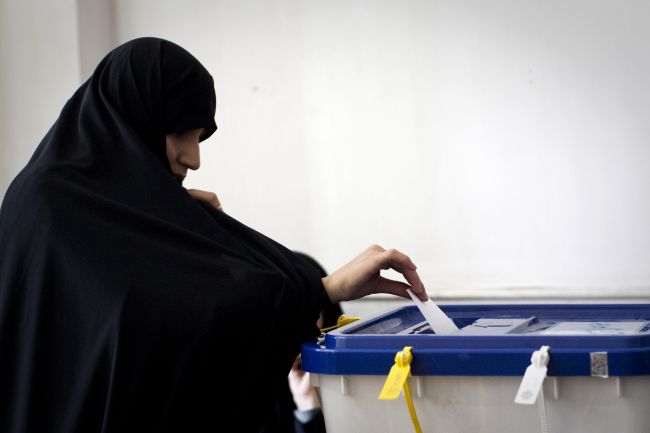
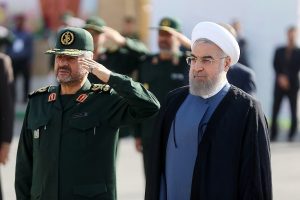
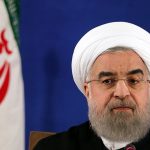
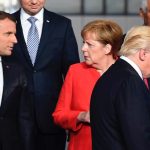
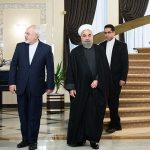
We can only help that Israel would follow suit
The election results are indicative of what I was hearing from the average people in every city through which we traveled late last year! Most people were yearning for a slow change in their government hoping to lessen the chances for the Pasdarans (arm forces) taking over the country politically since they were already in control of the economy.